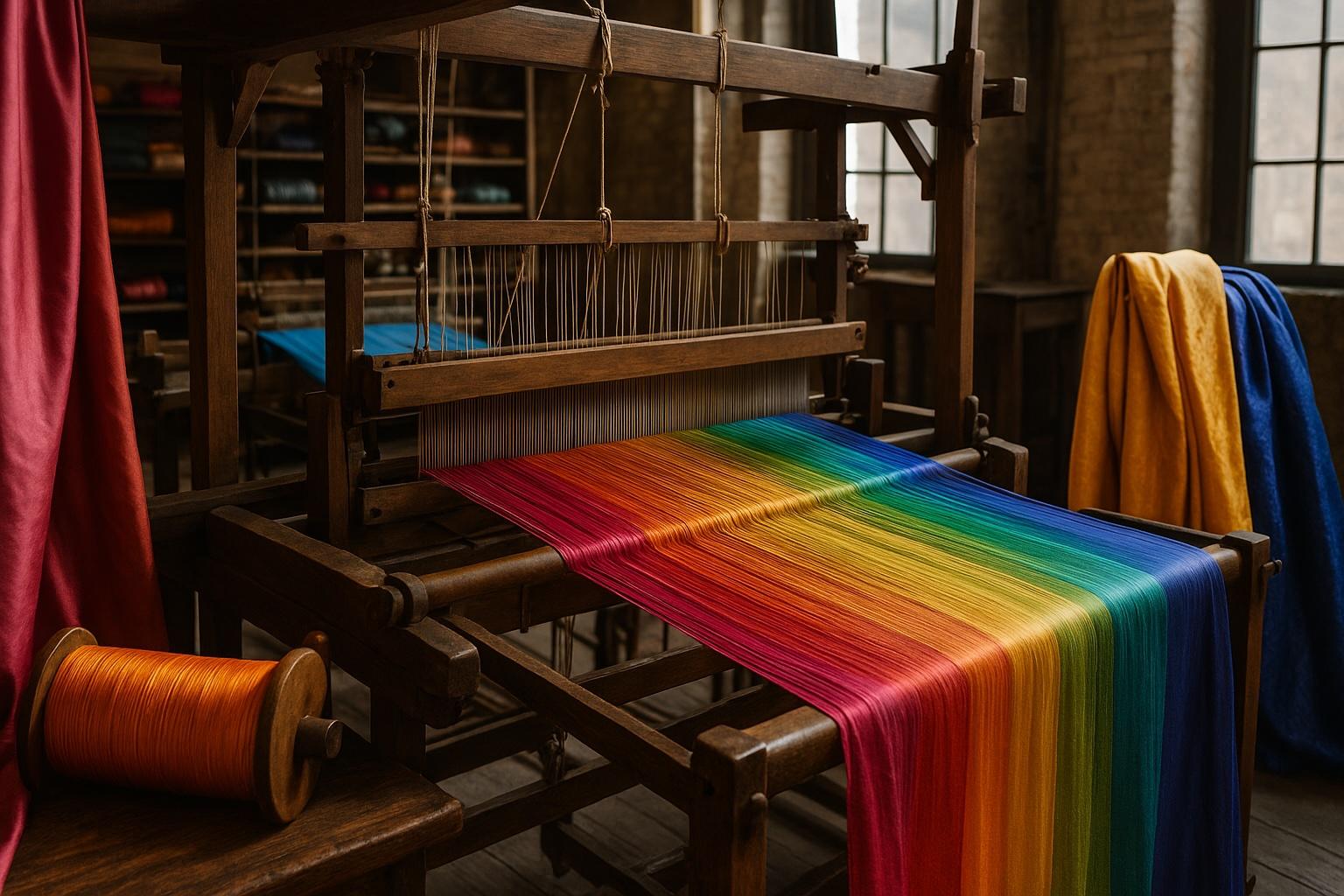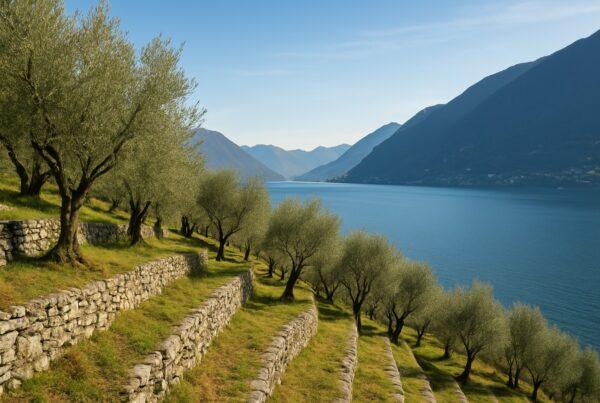Lake Como is celebrated worldwide for its beauty, but beyond the glimmer of water and villas lies another story—one woven into the very fabric of the city. Como has been known for centuries as the “city of silk,” a place where threads from faraway lands were transformed into luxurious fabrics destined for courts, ateliers, and fashion houses. Today, this legacy is not just a memory of the past but a living heritage, constantly revisited and reinterpreted.
The origins of a tradition
The story of Como’s silk begins in the late Middle Ages, when mulberry trees were planted along the fertile plains and silkworm breeding took root. By the fifteenth century, Como had established itself as a key center for silk production in northern Italy. Monks and merchants brought techniques from the East, and local families turned them into an industry that quickly shaped the region’s identity. The lake, with its pure waters, was perfect for washing and dyeing fabrics, giving Como’s silk a brilliance and quality recognized far beyond its borders.
The golden age of silk
By the seventeenth and eighteenth centuries, Como had become one of Europe’s most important centers for silk weaving. Palaces in Milan, Paris, and Vienna were decorated with fabrics woven on looms in workshops hidden behind the streets of Como. In the nineteenth century, the industrial revolution brought new energy: large mills were built, families like the Ratti and Mantero invested in technology and creativity, and the entire economy of the city revolved around silk.
This was Como’s golden age, when thousands of workers filled the mills, and the sound of looms was as familiar as the bells of the Cathedral. Wealth from silk not only built industries but also financed villas, theatres, and schools. The city’s cultural and social development is deeply tied to the fortunes of this shimmering fabric.
Challenges and resilience
The twentieth century brought both triumphs and trials. Como’s silk dressed Hollywood stars, European royalty, and haute couture models on Parisian runways. But globalization and the rise of cheaper production overseas challenged the local industry. Many mills closed, and the workforce shrank dramatically. Yet resilience defined the region. Instead of disappearing, Como reinvented itself.
Companies focused on excellence, betting on craftsmanship, innovation, and collaboration with top fashion houses. The result is that today, even if fewer in number, Como’s textile firms continue to produce some of the most refined silks in the world, supplying names like Chanel, Dior, Gucci, and Armani. The story of silk in Como is no longer about mass production but about precision, artistry, and the prestige of “Made in Italy.”
From fabric to fashion
What makes Como unique is not just the fabric itself, but the way it has evolved into style. The transition from traditional weaving to contemporary design has created a bridge between past and present. Textile companies have embraced research, producing innovative blends, experimenting with colors and textures, and adapting to sustainable methods.
At the same time, designers and artists have found inspiration in the archives of Como’s textile houses. Collections of vintage patterns, some dating back centuries, have been digitized and repurposed for today’s fashion. Walking through certain boutiques in the old town, visitors can see scarves, ties, and garments that embody this fusion: centuries-old know-how reinterpreted for modern elegance.
Silk tourism and cultural heritage
This heritage is increasingly open to the public. The Museo della Seta (Silk Museum) in Como tells the story from silkworm to finished fabric, displaying machines, samples, and photographs of mill workers. Some factories occasionally open their doors to guided visits, allowing curious travelers to step into the world of looms, colors, and prints. Even a simple stroll through Como reveals silk in shop windows, where the city’s tradition meets contemporary fashion.
Tourists who come for the lake often leave with a scarf or tie as a souvenir, carrying with them not just an accessory, but a piece of Como’s identity. The elegance of silk has become part of the city’s image, just as iconic as its villas and landscapes.
Innovation and the future
Today, Como’s textile industry is at a crossroads that is both challenging and exciting. Sustainability is no longer an option but a necessity, and many local firms are leading experiments with organic dyes, recycled fabrics, and reduced water consumption. At the same time, digital technology has revolutionized design and production, allowing patterns to be created with precision unthinkable just decades ago.
Universities and design schools in the region collaborate with textile companies, ensuring that a new generation of designers and technicians continues the tradition. The thread that connects Como’s silk to its future is innovation, woven together with respect for a heritage that still defines the city.
A city that still weaves
Como’s story of silk is not confined to history books. It continues in every workshop that experiments with colors, in every designer who opens an archive to find inspiration, in every boutique where silk becomes style. The city has shifted from being a factory town to being a place of creativity and excellence, but the essence remains the same: a dialogue between fabric and identity.
Visitors who look beyond the lake and villas will discover this deeper layer of Como. To understand its textile heritage is to see the city not only as a destination of beauty but also as a place of resilience, craftsmanship, and innovation. From silk to style, Como’s story is still being written—thread by thread, pattern by pattern, in a tradition that continues to dress the world.




